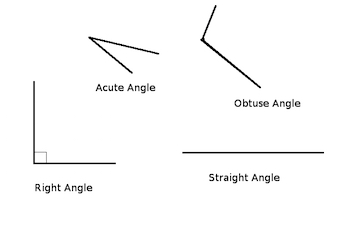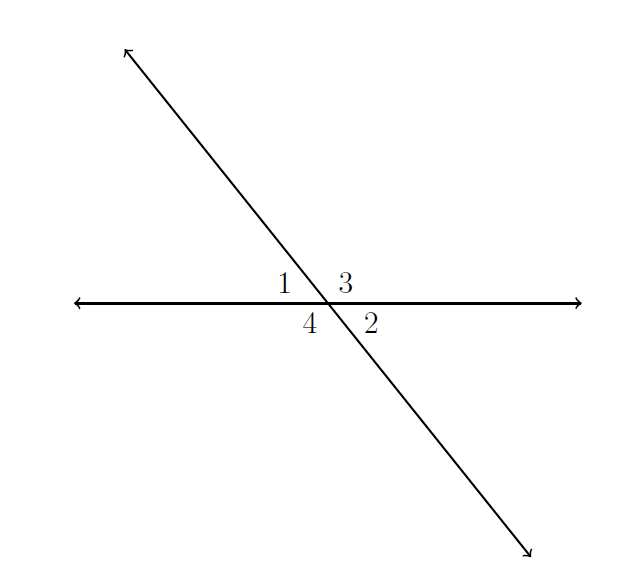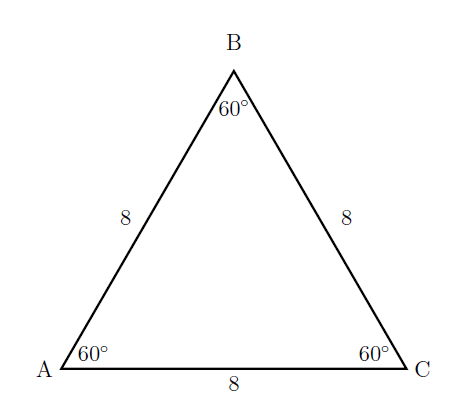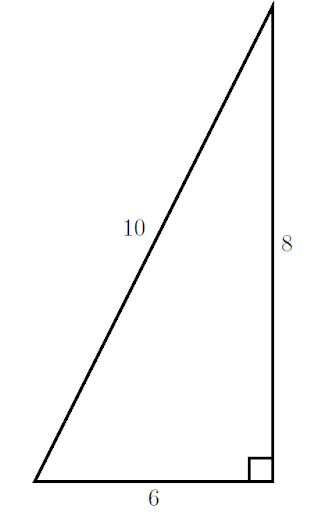Mathematics: Geometric and Spatial Reasoning Study Guide for the TSIA2
Page 3
Angles
When lines, rays, or segments intersect, they form angles. The point of intersection is called the vertex. Angles might be labeled just by the vertex or by a combination of three points that define the intersecting lines.
Measuring Angles in Degrees
Angles are measured in degrees or radians. The larger the angle, the greater the number of the measurement. So a 40-degree (\(40^\circ\)) angle is smaller than a 60-degree (\(60^\circ\)) angle.

Adapted from: http://www.kidsmathgamesonline.com/pictures.html
Using a Protractor
To measure an angle, place the protractor so that the vertex of the angle is right on the short vertical line in the center and line up one side of the angle with the zero mark. The other side of the angle will line up with the measure of the angle. If the sides of the angle are too short, carefully extend them with a straightedge.
Types of Angles
In addition to their specific numerical measurement, angles can be categorized individually and by where they are located compared to other angles.
Individual Angle Types
Several types of angles are defined by their measure in degrees:
Acute: an angle measuring less than 90 degrees
Obtuse: an angle measuring greater than 90 degrees
Right: an angle measuring 90 degrees.
Straight: an angle measuring 180 degrees (a straight line)

Using Angle Relationships
Some pairs of angles have special names. We will look at three in this section.
Complementary angles are two angles that have measures that add up to \(90^\circ\).
Supplementary angles are two angles that have measures that add up to \(180^\circ\).
If \(\angle 1\) and \(\angle 2\) have measures \(72^\circ\) and \(28^\circ\), they are complementary.
If \(\angle 3\) and \(\angle 4\) have measures \(134^\circ\) and \(46^\circ\), they are supplementary.

When a pair of lines intersect, they form two pairs of vertical angles. In the figure below, \(\angle 1\) and \(\angle 2\) are a pair of vertical angles. Also \(\angle 3\) and \(\angle 4\) are a pair of vertical angles. It’s good to remember that vertical angles are always congruent (that is, identical in form).

Properties and Types of Triangles
The sum of the interior angles of any triangle is 180 degrees.
Types of triangles are defined by their angles and sides.
Scalene—a triangle with sides of three different lengths.

Acute—a triangle where all of the angles are acute.

Obtuse—a triangle with one obtuse angle.

Isosceles—a triangle with two equal sides and two equal interior angles.

Equilateral—a triangle with three equal sides and three equal interior angles. An equilateral triangle is a regular polygon.

Right Triangle—a triangle with one angle of 90 degrees. The longest side of a right triangle is opposite the right angle and is called the hypotenuse. The other two sides are called the legs.

All Study Guides for the TSIA2 are now available as downloadable PDFs